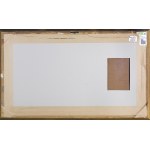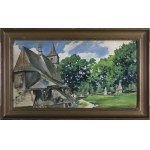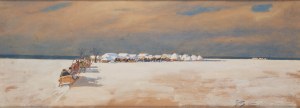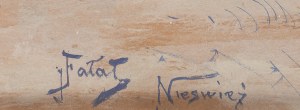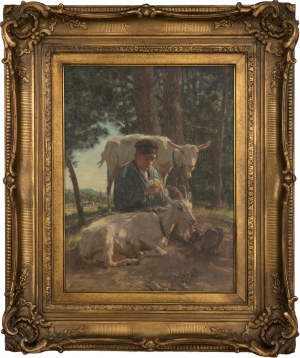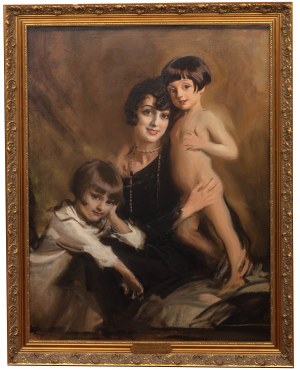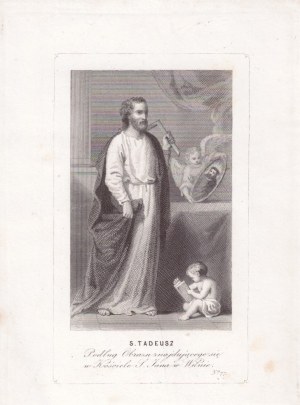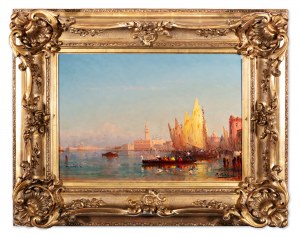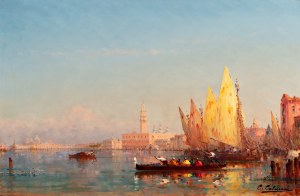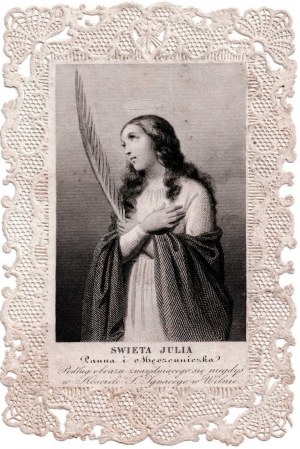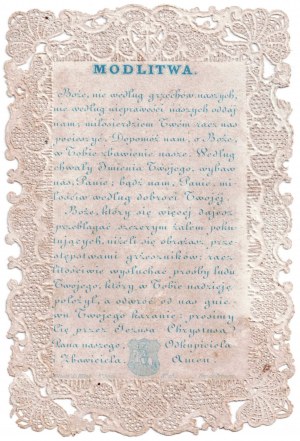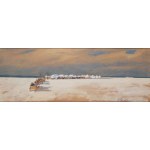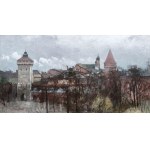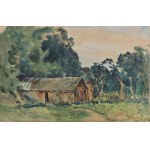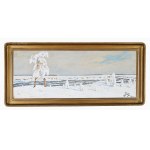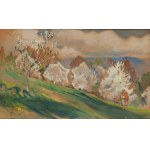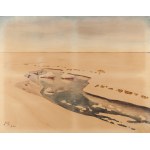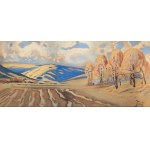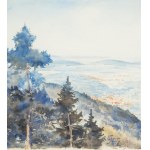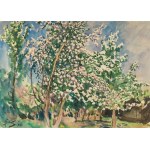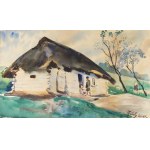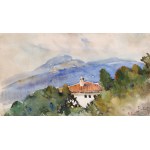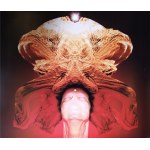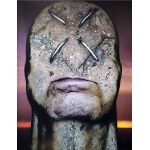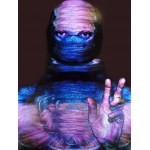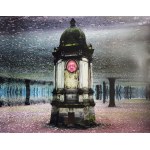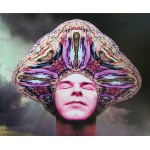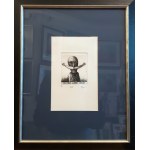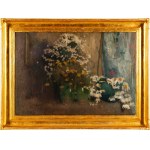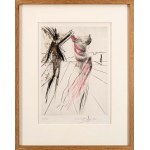55,0 x 100,0cm - watercolor, pencil, paper signed p.d.: JFałat 906
On the reverse an oval stamp with the inscription: Musée Jasieński | Cracovie | Autriche; below in pencil g.f.. [?].
Provenance:
The stamp on the back of the painting indicates its provenance from the collection of Feliks Mangghi-Jasieński, one of Poland's most famous and distinguished collectors. Jasieński bequeathed his collection of more than 15,000 pieces - which included, among others, Podkowiński's Shal, as well as masterpieces by such prominent artists as Malczewski, Wyczółkowski and Wyspianski - to the National Museum in Cracow.
I am a thought in my beloved Osiek," Fałat wrote in a letter to Gabriela Rudzińska (quoted in T. Dudek Bujarek, Julian Fałat - biography written with a brush, Bielsko-Biała 2017, p. 158). Osiek, next to Bystra, was his unique outdoor location. The village, located in the land of Oświęcim, along with nearby Bielany, Łęki and Zasolany, belonged to the estate of the Rudziński family. Julian Fałat's close acquaintance with the Rudziński family began with his friendship with Lucjan Wrotnowski (1847-1902), a lawyer, publisher and vice-president of the Society for the Encouragement of Fine Arts in Warsaw, who was the son of their neighbors. Fałat probably visited Łęki and Osiek as early as after he returned from Berlin and became director of the Cracow School of Fine Arts in 1895, hosting the Wrotnowskis at the time. It was in Łęki that the artist met his future wife Maria Luiza Comello de Stuckenfeld, an alumna of the Congregation of the Resurrectionist Sisters, who were cared for by Gabriela Wrotnowska.
One of the artist's favorite motifs was the view of the wooden St. Andrew's Church, as Kinga Kawczak of the Historical Museum in Bielsko-Biała writes: Another important point of Fałat's plein-air paintings in Osieckie was the escarpment in the center of the village, with a picturesque late-Gothic, wooden, larch church, covered with a steep shingle roof, with satellites and a high tower. The artist "portrayed" it from all sides and in all seasons. Among them are shots of the entire body of the building with the surrounding cemetery and fence, sometimes with some figures, painted in color or left as drawn sketches. More often, however, these are narrow frames in which the painter focuses on formal solutions - the play of light and shadow, color juxtapositions, impressions. In particular, the views of its southern and eastern elevations with the flickering glow of light filtered through the leaves of centuries-old oak trees, sometimes with fragments of tree trunks and their branches, are extremely impressionistic. There were also a few shots of the interior, known from the archival press, with a record of the Baroque furnishings (Fałat's Lagoons and Other Osieckie Plein Airs, "Exhibit" 2018, no. 3, p. 4).
Julian Fałat (Tuligłowy [Lvov district] 1853 - Bystra near Bielsko 1929) - painter and pedagogue - one of the most outstanding Polish artists of the late 19th and early 20th centuries, member of Polish and European creative associations and the Royal Academy of Fine Arts in Berlin, repeatedly awarded medals at international exhibitions. He studied painting with Władysław Łuszczkiewicz and Leon Dembowski at the School of Fine Arts in Cracow (1868-71 and 1881) and at the Academy of Fine Arts in Munich with Alexander Strähuber and Johan Leonhardt Raab (1877-80). After his studies he spent several months in Rome, in 1884 he was in Paris and Spain, and in 1885 he made a sea voyage around the world. In 1886, while hunting with the Prince Radziwill family in Nesvizh, he met the later German Emperor Wilhelm II - for whom he then worked as a court painter in Berlin in 1886-95. In 1894-96 he collaborated with Wojciech Kossak on the Berezina panorama. In 1895 he was appointed director of the School of Fine Arts in Cracow, where he thoroughly reformed the teaching system, transforming the school into a modern Academy of Fine Arts (r.1900). He was rector of the Academy until 1910; after retiring, he settled in Bystra near Bielsko. An excellent watercolorist, he also painted in oils. In his earlier period he worked in the realist convention, with time he lightened and enriched his palette, and in watercolors he introduced an overflowing color patch. He became famous as a painter of hunting scenes usually set in winter scenery; he also painted landscapes, rural genre scenes, portraits and urban views.
Recently viewed
Please log in to see lots list
Favourites
Please log in to see lots list




